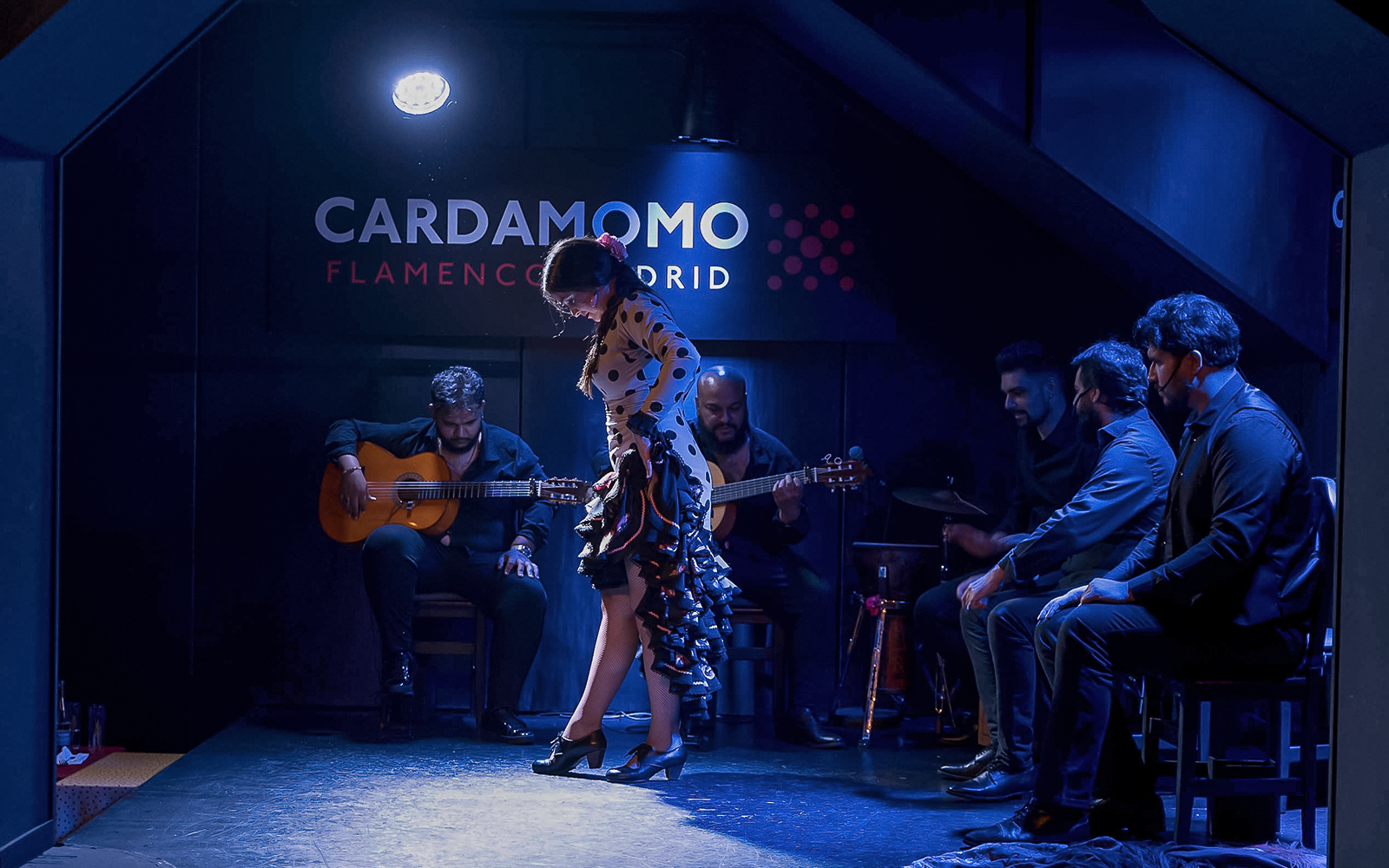
The history of flamenco venues and tablaos
Flamenco, that passionate dance of Spain, wasn't always about grand stages and roaring crowds. Its fiery spirit once flickered in intimate spaces, fueled by raw talent and the rhythmic pulse of guitars. So, where did flamenco find its first dedicated homes? Enter: the tablaos!
What lies in the shadows: The birth of a new era
Flamenco is one of the most widely known Spanish art forms. The performance style draws crowds from all over the world like moths to a flame, a passionate and fiery showcase of the region's rich cultural heritage. Yet, it was once a remarkably unknown art form, one that was reserved for private spaces, parties, and celebrations. That is, of course, until the first cafés singers stepped out of the shadows and into the spotlight.
Set the stage: From intimate gatherings to spotlight sensations
Imagine smoky cafés filled with the powerful stomping of flamenco dancers and the soulful cries of singers - that's where the history of the tablao begins. In the mid-19th century - the Golden Age of Flamenco - these cafés cantantes or 'singing cafés' emerged in Andalusia, Spain, offering a platform for flamenco artists to showcase their skills.
These weren't your modern flamenco venues, however. These early stages were essentially after-hours parties where the magic of flamenco unfolded for a select audience. Long tables and chairs lined the spaces with a larger table placed front and center for the performers, with the rest of the space sporting decorative elements that reflected the aesthetics of the era. With delicious food made to order and drinks flowing, these spaces were full of jubilation and reverie, earning them the monicker 'Cathedrals of the Duende', duende being the unique quality of passion, emotion, and authenticity that defines flamenco.

Stepping out of the shadows: The evolution of tablaos
As flamenco gained popularity, so too did the tablaos. In the early 20th century, these venues started to specifically focus on flamenco, transforming from casual hangouts to dedicated performance spaces. Think smaller, intimate settings with a stage and seating specifically designed for the electric energy of flamenco. As the stage evolved, the art form itself also began to reshape, with the cante (singing) blending with the toque (instruments, specifically guitar), and the baile (dance) taking center stage.
From rustic charm to modern elegance: The changing face of tablaos
Over time, tablaos have gone from the more simple after-hours party to establishments dedicated to the preservation and development of flamenco. Gone are the dimly-lit cafés, replaced by stylish venues with high-quality sound systems, comfortable seating, better accessibility, menus serving local cuisine and drinks, and much more. Yet, the essence of the roots of tablaos remains – a focus on raw talent and creating a close connection between performers and the audience. Unlike most theaters and entertainment venues, tablaos are built to host an intimate performance dedicated solely to captivating the audience with the magic of flamenco.

The allure of a tablao: Tradition in modernity
Amid the changing look of a flamenco venue one might wonder: what exactly defines a tablao? Surely, it could be anything from a tiny quaint café to a sprawling 1000-seater classical concert hall? If you find yourself thinking along those lines, you wouldn't be wrong. Flamenco venues have evolved to a point where there are several different types of tablaos, from intimate spaces that only serve a few dozen patrons at a time and focus solely on the performance to tablaos that double as a gastronomy experience, and from ones located within old caves to ones that sit within massive halls decked in grand art and lush interiors.
There is, however, one thing that ties all these places together: each offers a space for flamenco to thrive in its purest form. Renowned artists come together to deliver unforgettable performances showcasing the technical brilliance, emotional depth, and captivating energy of this unique dance form. Each space, regardless of the form it takes, offers a chance to witness the true essence of flamenco, up close and personal, holding fast to the true history of flamenco venues and tablaos: spaces that once were and will always remain, Cathedrals of the Duende.
